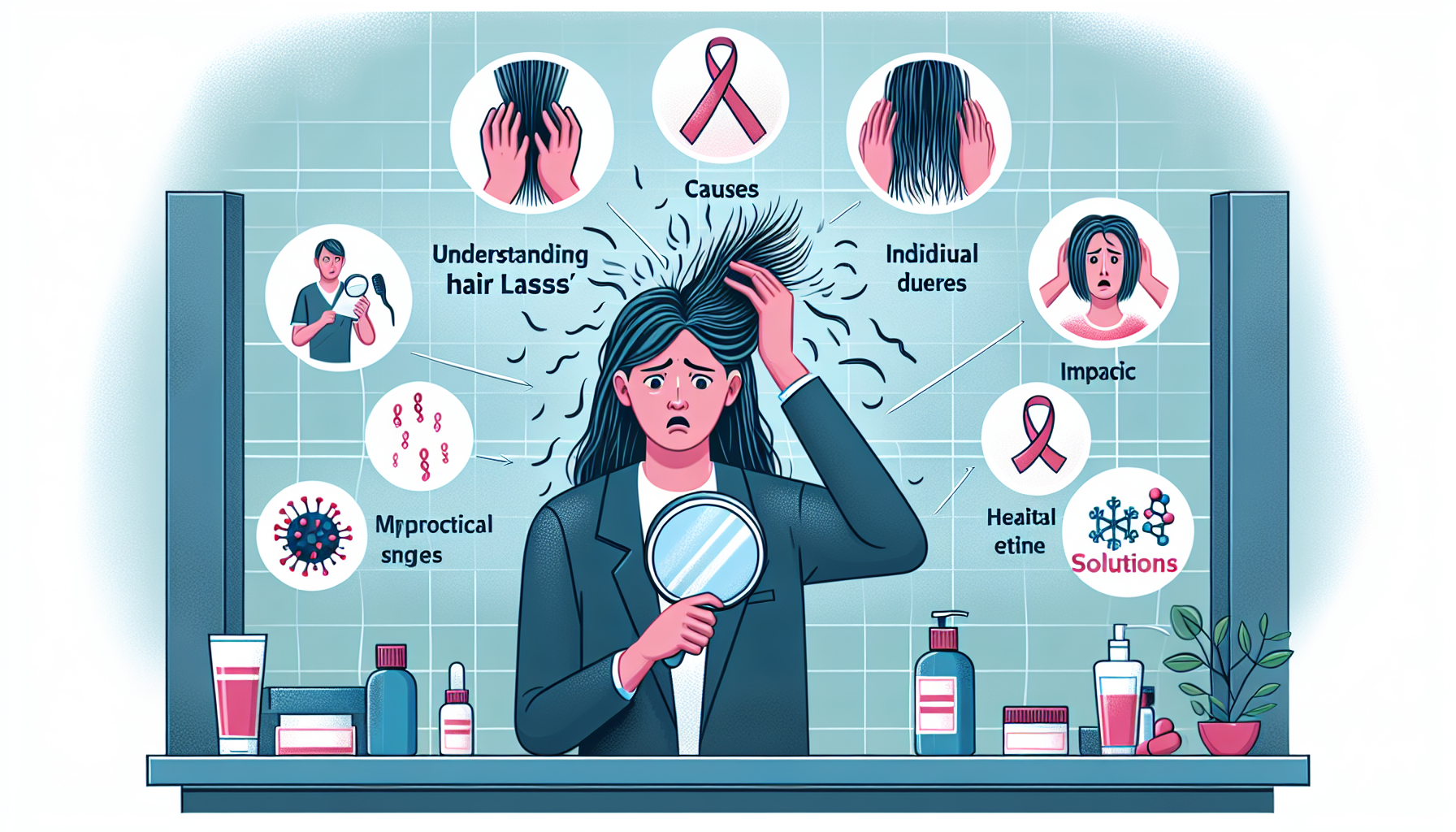Understanding Hair Loss: Insights, Causes, and Management
Do you ever find yourself glancing in the mirror, only to be startled by a more visible scalp than you remember? Hair loss can often sneak up on us, turning into a pressing concern as our hair thins or recedes over time.
Let's dive into the intricate world of hair loss, unravel its causes, and explore effective management strategies to help keep those tresses healthy and robust.
What is Hair Loss and How Common is It?
Hair loss, medically known as alopecia, occurs when hair density reduces noticeably, particularly in areas where hair should naturally sprout. It might manifest as thinning hair, a widening part line, or a receding hairline. According to recent statistics, hair loss has become increasingly common, with a significant rise in the number of reported cases.
From 2018 to 2023, the number of reported hair loss cases climbed by about 14%, reaching approximately 250,000 affected individuals. What's interesting is that these statistics often exclude those with less severe or unreported cases, including conditions like androgenetic alopecia—otherwise known as male or female pattern baldness—which impacts a widespread demographic beyond those captured in the statistics.
Who is Affected by Hair Loss?
Surprisingly, hair loss affects a broad age range. Once predominantly a concern for older adults, it is now a growing issue among the younger generation, particularly those in their 20s and 30s. Statistics reveal that about 43% of hair loss sufferers fall within this age bracket. The psychological impact can be profound, leading to stress and a decline in self-esteem and quality of life.
It's crucial to emphasize that some degree of hair loss is a normal part of aging and can even occur in adults with otherwise healthy hair. For instance, losing 50-100 strands a day is typical. However, if you notice a significant increase in hair fall, it might be time to consult a dermatologist.
Types of Hair Loss
Hair loss conditions are classified mainly based on their characteristics and causes:
- Androgenetic Alopecia: Known as male-pattern baldness or female-pattern hair loss, this is the most common form believed to be caused by genetic predisposition and hormonal changes.
- Alopecia Areata: An autoimmune disorder that results in sudden patches of hair loss.
- Cicatricial Alopecia: The rarer type where inflammation destroys hair follicles, resulting in permanent hair loss.
Understanding these types helps in determining the appropriate treatment path.
Common Causes of Hair Loss
Various factors can trigger hair loss, encompassing lifestyle, health conditions, and even emotional stress. Let’s explore some of the most prevalent causes:
- Genetics: The most common cause of hair loss, accounting for the majority of cases.
- Hormonal Changes: Women may experience postpartum hair loss, menopause-related thinning, or conditions like polycystic ovary syndrome (PCOS).
- Medical Conditions: Thyroid issues, anemia, and certain autoimmune diseases can lead to hair loss.
- Dietary Deficiencies: Lack of vital nutrients such as protein, iron, and vitamin D can affect hair health.
- Lifestyle Factors: Stress, lack of sleep, and unhealthy diet habits frequently exacerbate hair loss.
Effective Management Strategies
For those facing hair loss, early diagnosis and treatment can make a substantial difference. Here are some practical strategies to manage and prevent hair loss, emphasizing lifestyle adaptations:
- Maintain a Healthy Diet: Ensure you’re getting enough protein and vitamins. Foods rich in proteins and antioxidants can significantly contribute to healthier hair.
- Regular Scalp Care: Use a gentle shampoo and conditioner. Washing hair regularly keeps the scalp clean and prevents infections tha`t can contribute to hair loss.
- Lifestyle Modifications: Avoid tight hairstyles that may pull on hair follicles, and steer clear of excessive heat treatments or harsh chemicals like dyes and bleaches.
- Consult a Professional: If you notice excessive shedding, consider seeking advice from a dermatologist to explore medical treatments such as minoxidil or finasteride.
- Stress Management: Practice relaxation techniques such as yoga or meditation to help manage stress levels.
Medical Treatments and Innovations
Those who find lifestyle changes insufficient might turn to medical treatments or new technological innovations. Medical treatments can range from topical applications and oral medications to more invasive procedures like hair transplant surgery.
Additionally, the realm of wearable technology has a burgeoning role in hair health. Devices that stimulate the scalp and promote circulation and growth present a fascinating frontier for non-invasive treatments.
The Psychological Impact of Hair Loss
While hair loss might seem merely cosmetic, the mental and emotional impact cannot be underestimated. It often acts as a catalyst for stress, self-consciousness, and social anxiety.
Building a supportive community or engaging in therapy can provide significant emotional relief. Moreover, embracing hair loss through styling choices like short haircuts or opting for wigs can empower individuals to regain confidence and take control over their appearance.
Conclusion: Navigating the Journey of Hair Loss
In conclusion, hair loss is more than a mere physical change—it can profoundly affect one’s mental health and day-to-day life. Understanding its causes and recognizing early signs can pave the way for effective management and treatment. Whether it's adopting healthier lifestyle practices or exploring medical treatments, the journey to managing hair loss is deeply personal and requires a comprehensive approach.
Are you or a loved one facing concerns about hair loss? Explore proactive steps in diet, lifestyle, and medical consultation to understand and address the issue. Share your journey, inspire others, and join a community that confronts hair loss head-on. What steps will you take today toward a healthier hair future?

